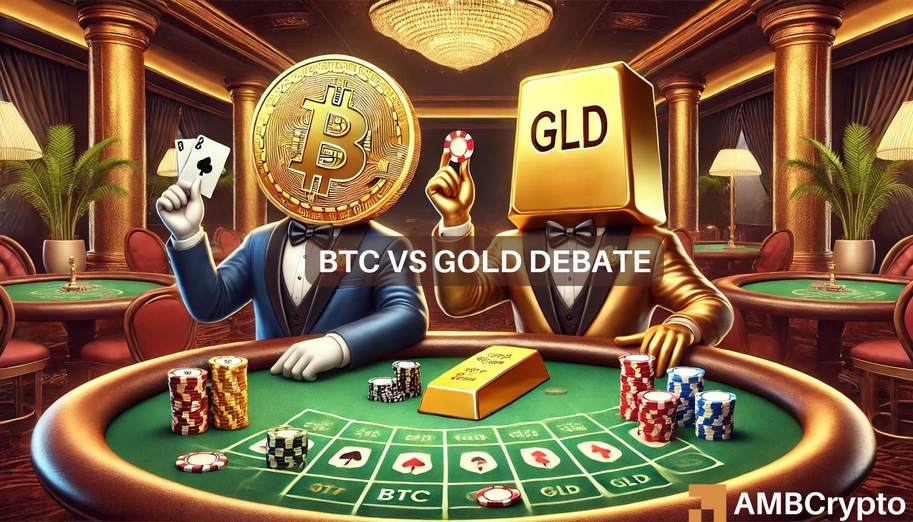Jack Mallers of Strike recently defended Bitcoin in a heated debate with Peter Schiff, a prominent critic of cryptocurrencies. The ongoing discourse between supporters of gold and advocates of Bitcoin has raised the question: which form of currency reigns supreme?
Is physical gold the ultimate form of money, or does ‘digital gold’ in the form of Bitcoin take the lead?
In Mallers’ view, Bitcoin stands out as the ‘ultimate money’ due to its adherence to all the fundamental properties of money. He argued,
“BTC is unparalleled as a form of currency throughout human history… It boasts supreme scarcity with a fixed supply, exceptional portability, and impeccable divisibility… Over the past decade, BTC has demonstrated an average annual return of 60%, vastly surpassing gold’s 2% return over the same period.”
Bitcoin vs. Gold: A Clash of Titans
However, Peter Schiff expressed his disagreement with Mallers, asserting that he does not consider BTC to be a legitimate form of money. Schiff remarked,
“I do not regard BTC as a legitimate form of currency. A true currency must possess maximum marketability and intrinsic value, qualities which Bitcoin lacks. It is primarily utilized for speculative purposes and as a medium of exchange, failing to serve the role of money adequately unlike gold.”
Schiff acknowledged Bitcoin’s superior performance compared to all other assets and commodities in the last ten years. Yet, he emphasized that gold, specifically tokenized gold, offers a more favorable alternative to BTC.
According to Schiff, tokenized gold presents a more efficient and cost-effective means of global transfer than BTC, positioning it as a superior solution for a digital monetary system.
“Gold could serve as the foundational element in constructing a digital currency system, a concept more robust than when gold served as the cornerstone of a paper currency system.”
Despite these assertions, Mallers drew attention to gold’s heavy reliance on centralized intermediaries to facilitate transactions, thereby limiting its scalability within the global economy and resulting in its demonetization, preventing it from becoming a truly universal reserve currency.
He posited that the adoption of BTC would have been notably slower had gold been a formidable competitor and global reserve asset.
Consequently, Mallers forecasted that based on liquidity injections (money inflation) and the advanced technology underlying BTC, its valuation could reach anywhere from $250K to $1M in the next 12 to 18 months.
Schiff, however, approached Mallers’ price projections with skepticism. Nonetheless, he indicated that he would reassess his stance on BTC if the currency witnessed widespread adoption and transitioned into a major global reserve asset.
While issuing a caution against making speculative investments in BTC, highlighting the existence of other assets with reduced downside risks, Schiff recently pointed out that gold investors realized a 140% profit compared to BTC Exchange-Traded Funds (ETFs) following the latest market downturns.
Although accurate from a short-term perspective, Peter Brandt suggested a favorable long-term outlook for BTC, citing a bullish trend in the BTC/GLD ratio chart which could potentially drive BTC’s value up by 123% against gold.
As of the time of writing, Bitcoin stood as the tenth largest asset by market capitalization, boasting a market cap of $1 trillion. In contrast, gold dominated the charts with a market cap approaching $17 trillion.

